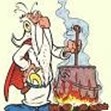John Roque- "Nothing More Than Feelings"
1 Mensagem
|Página 1 de 1
John Roque- "Nothing More Than Feelings"
Deixo aqui um original artigo do John Roque.
"Nothing More Than Feelings"
By John Roque
Special to RealMoney.com
03/04/2003 11:33 AM EST
Everyone's paying very close attention to what investors are "feeling." It's not as sentimental as the sappy Morris Albert song, but nevertheless, the investors I've spoken with lately are very touchy/feely. People are trying to add nuance by working out subtle changes in investor sentiment so they can go against what they feel is "consensus." In fact, you're probably doing the same thing right now.
A recent Wall Street Journal column included this thesis as well: "The conventional wisdom is that the market will rally when the war begins. Given that, a smart investor might guess that consensus is already baked into stock prices, which means there wouldn't be a rally. But if everyone knows the consensus is always wrong, we could rally anyway. Does your head hurt yet?" Yes, it does.
Related Stories
Ground Control to Major Trend
Sticking With a Bearish Sentiment
Bear Market: 11 Degrees of Separation
It hurts because never before (at least in my career) have so many investors become so attuned to sentiment. Surveys from Market Vane, Consensus Inc., Chartcraft's Investors Intelligence, LowRisk.com and the Arthur Avenue Calabria Pork Store Pepperoni Indicator are all pretty readily referenced. Bullish, bearish and neutral figures are as ubiquitous as "exclusive" Michael Jackson interviews, reality shows on network TV and the Hilton sisters on Page Six of The New York Post.
Help Arrives
But these various indicators aren't doing a great job of capturing market sentiment. The problem is that the categories never change; they're always bullish, bearish or neutral/correction. To add another "sentiment" indicator to the fray, here's my especially unscientific and unlikely-to-be-repeated-ever-again "I've Just Done a Lot of Marketing and Have Spoken to a Ton of People on the Phone" indicator.
Percentage of bulls who have been bulls, are still bulls and will probably always be bulls: 100%. (No insight here.)
Percentage of bears who have been bears, are still bears and will probably be bears until they believe "stocks are lower or cheaper, or the world becomes less risky": 100%. (No insight here.)
Percentage of new bears: 0%. (Pretty insightful.)
Percentage of bears who, on occasion, are cyclical bulls: 80%. (Some insight here.)
Percentage of hedge funds that are especially short: 2%. (Please remember that I've come to this figure purely anecdotally and have nothing to go on except what I'm hearing from my hedge fund contacts.)
Percentage of investors who believe the "economy is coming back" due to fiscal and monetary stimuli, continued consumer spending and continued low interest rates: 90%. (Pretty insightful. If the economy is coming back, then why are stocks acting so poorly, and why is the 30-year T-bond so strong?)
Percentage of long-only investors who don't believe the market can be down for four years in a row: 100%. (Pretty insightful. They use "the market's only been down four straight years one time" argument, but they never consider the fact that the S&P 500 had two separate five-year winning streaks from 1982 to 1999.)
Percentage of long-only investors who are asking me which names they should sell, rather than asking which stocks can rally: 1%. (Perhaps this is a function of the calls I get, but in the past few weeks, I recall only one guy who was concerned about stocks he owns that could get hit hard here.)
Percentage of investors who believe a weak dollar is good for exporters and our economy: a lot. (I don't understand this at all. If the U.S. benefited when the dollar was strong, how can it also benefit when the dollar is weak?!?)
Percentage of investors who believe the huge rallies in oil and gold are all about Iraq: a lot.
Percentage of long-only and hedge fund investors and all forms of media, individual investors and family pets who believe the market will rally as soon as "we go into Iraq" because they're using the previous Iraqi conflict as a model for what should happen this time: nearly everyone. (Pretty insightful.)
Percentage of investors who believe that because long-only guys are hoping for a rally and hedge funds are not especially short, the market will probably continue to decline, thereby providing the most pain to the greatest amount of people in that long-only people get hit again and hedge funds don't make money because they're not short enough: me.
There are so many crosscurrents of sentiment information and so many ways to try to "outcontradict the contra opinion" that I figure it's important to consider the following:
Let's say "we go into Iraq," but it happens after stock prices are meaningfully lower from here. What sort of rally must then occur to make you feel better?
If everyone is so bearish, why isn't the number of new lows on the New York Stock Exchange and the Nasdaq soaring?
Does your head hurt yet? Mine does.
I had the good fortune to be a guest on "Kudlow & Cramer" last Friday. Jim Cramer made the following point: He thought the Dow Jones Industrial Average was about 500 points away from a really good buying opportunity. He asked what I thought. I said, "I agree that the direction is lower, but I figure the good buying opportunity you're talking about won't come until the Dow is 500 points lower than it was in October 2002. I figure this level would be equivalent to 725 on the S&P 500."
Instead of explaining the 725 figure here, I thought it'd be a good idea to put these two charts in instead.
I hope that helps clarify things. Now, I'm off to take another aspirin. "
(in www.realmoney.com)
"Nothing More Than Feelings"
By John Roque
Special to RealMoney.com
03/04/2003 11:33 AM EST
Everyone's paying very close attention to what investors are "feeling." It's not as sentimental as the sappy Morris Albert song, but nevertheless, the investors I've spoken with lately are very touchy/feely. People are trying to add nuance by working out subtle changes in investor sentiment so they can go against what they feel is "consensus." In fact, you're probably doing the same thing right now.
A recent Wall Street Journal column included this thesis as well: "The conventional wisdom is that the market will rally when the war begins. Given that, a smart investor might guess that consensus is already baked into stock prices, which means there wouldn't be a rally. But if everyone knows the consensus is always wrong, we could rally anyway. Does your head hurt yet?" Yes, it does.
Related Stories
Ground Control to Major Trend
Sticking With a Bearish Sentiment
Bear Market: 11 Degrees of Separation
It hurts because never before (at least in my career) have so many investors become so attuned to sentiment. Surveys from Market Vane, Consensus Inc., Chartcraft's Investors Intelligence, LowRisk.com and the Arthur Avenue Calabria Pork Store Pepperoni Indicator are all pretty readily referenced. Bullish, bearish and neutral figures are as ubiquitous as "exclusive" Michael Jackson interviews, reality shows on network TV and the Hilton sisters on Page Six of The New York Post.
Help Arrives
But these various indicators aren't doing a great job of capturing market sentiment. The problem is that the categories never change; they're always bullish, bearish or neutral/correction. To add another "sentiment" indicator to the fray, here's my especially unscientific and unlikely-to-be-repeated-ever-again "I've Just Done a Lot of Marketing and Have Spoken to a Ton of People on the Phone" indicator.
Percentage of bulls who have been bulls, are still bulls and will probably always be bulls: 100%. (No insight here.)
Percentage of bears who have been bears, are still bears and will probably be bears until they believe "stocks are lower or cheaper, or the world becomes less risky": 100%. (No insight here.)
Percentage of new bears: 0%. (Pretty insightful.)
Percentage of bears who, on occasion, are cyclical bulls: 80%. (Some insight here.)
Percentage of hedge funds that are especially short: 2%. (Please remember that I've come to this figure purely anecdotally and have nothing to go on except what I'm hearing from my hedge fund contacts.)
Percentage of investors who believe the "economy is coming back" due to fiscal and monetary stimuli, continued consumer spending and continued low interest rates: 90%. (Pretty insightful. If the economy is coming back, then why are stocks acting so poorly, and why is the 30-year T-bond so strong?)
Percentage of long-only investors who don't believe the market can be down for four years in a row: 100%. (Pretty insightful. They use "the market's only been down four straight years one time" argument, but they never consider the fact that the S&P 500 had two separate five-year winning streaks from 1982 to 1999.)
Percentage of long-only investors who are asking me which names they should sell, rather than asking which stocks can rally: 1%. (Perhaps this is a function of the calls I get, but in the past few weeks, I recall only one guy who was concerned about stocks he owns that could get hit hard here.)
Percentage of investors who believe a weak dollar is good for exporters and our economy: a lot. (I don't understand this at all. If the U.S. benefited when the dollar was strong, how can it also benefit when the dollar is weak?!?)
Percentage of investors who believe the huge rallies in oil and gold are all about Iraq: a lot.
Percentage of long-only and hedge fund investors and all forms of media, individual investors and family pets who believe the market will rally as soon as "we go into Iraq" because they're using the previous Iraqi conflict as a model for what should happen this time: nearly everyone. (Pretty insightful.)
Percentage of investors who believe that because long-only guys are hoping for a rally and hedge funds are not especially short, the market will probably continue to decline, thereby providing the most pain to the greatest amount of people in that long-only people get hit again and hedge funds don't make money because they're not short enough: me.
There are so many crosscurrents of sentiment information and so many ways to try to "outcontradict the contra opinion" that I figure it's important to consider the following:
Let's say "we go into Iraq," but it happens after stock prices are meaningfully lower from here. What sort of rally must then occur to make you feel better?
If everyone is so bearish, why isn't the number of new lows on the New York Stock Exchange and the Nasdaq soaring?
Does your head hurt yet? Mine does.
I had the good fortune to be a guest on "Kudlow & Cramer" last Friday. Jim Cramer made the following point: He thought the Dow Jones Industrial Average was about 500 points away from a really good buying opportunity. He asked what I thought. I said, "I agree that the direction is lower, but I figure the good buying opportunity you're talking about won't come until the Dow is 500 points lower than it was in October 2002. I figure this level would be equivalent to 725 on the S&P 500."
Instead of explaining the 725 figure here, I thought it'd be a good idea to put these two charts in instead.
I hope that helps clarify things. Now, I'm off to take another aspirin. "
(in www.realmoney.com)
- Anexos
-
- aroque.gif (8.33 KiB) Visualizado 385 vezes
-
- broque.gif (24.27 KiB) Visualizado 386 vezes
1 Mensagem
|Página 1 de 1
Quem está ligado:
Utilizadores a ver este Fórum: AlfaTrader, Anexo600, hugob0ss, Investor Tuga, jjlefty, latbal, malakas, Mar58, Nuno V, Opcard33, paulopereira.pp36.pp, Purificaçao, SerCyc, Shimazaki_2, tami, trend=friend, yggy e 736 visitantes



